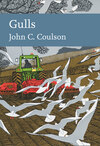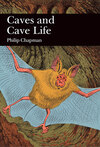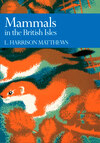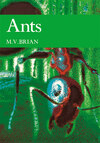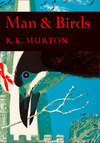Kitabı oku: «Gulls», sayfa 8
In the studies, only minimal differences were apparent in the weights of Black-headed Gulls caught in July and August just after dawn (before they have eaten their first feed of the day) compared to those caught in the afternoon (Table 17). However, as day length becomes shorter and the period when the gulls cannot feed increases, their overnight weight loss increases progressively. By December and January, the overnight weight loss recorded reached 18.3 g, which is an appreciable 6 per cent decrease of the afternoon body weight, at a time when body weight is at a seasonal maximum (Table 17 and Fig. 38).

FIG 38. The monthly average weights of adult and first-year male and female Black-headed Gulls in north-east England. Based partly on data analysed by MacKinnon (1986) and on unpublished personal data, totalling 1,953 individuals. Note that few first-year birds were weighed in April, May and June.
There is a widely held view that winter is the period when birds face the highest risk of food shortages, leading to loss of weight and increased mortality. In the case of the Black-headed Gull, however, this is not so. Prolonged periods of hard frost do little to affect the average weight of the birds. Table 18 shows the deviation in weight of Black-headed Gulls from the monthly average in relation to the number of consecutive days with hard ground frosts before capture. Short periods of frosty weather had little impact on their weights, and even with more than four days of continuous hard frosts, their weights had declined by only 3.7 g, or about 1.2 per cent of the body mass expected at that time of year.
TABLE 17. Weight change between dawn and afternoon of adult Black-headed Gulls between July and January. Weights are the average for males and females recorded in north-east England. Significant overnight weight losses are indicated by an asterisk (*).

TABLE 18. The effect of consecutive days with hard ground frosts on the weight of Black-headed Gulls. Results are shown as the deviation from the average weight of adults of each sex in the month of capture in north-east England.


FIG 39. The percentage of the total number of ringed adult Black-headed Gulls reported dead in each month of the year. The distribution suggests that mortality is relatively low during the winter months and then peaks at about twice the winter rate during the breeding season (May to July). Figures are based on 2,575 recoveries of adults and include individuals recovered abroad.
With Black-headed Gulls achieving high body weights in winter and sustaining these during cold weather, this begs the question as to when the risk of mortality is highest in the species. This was first investigated by Jim Flegg and Christopher Cox in 1956–74 (Flegg & Cox, 1975), and the amount of related data have increased since then following the recovery of many more British ringed birds found dead from 1975 to 1984 (Fig. 39). In fact, the seasonal pattern of deaths has changed little since the original analysis, with the numbers reported dying each month during the breeding season (April to July) double those in each month between October and March. In the British climate, Black-headed Gulls are at a greater risk of being killed by predatory mammals while breeding (as found by Hans Kruuk at Ravenglass and Clive Craik in the Hebrides), than by food shortages in winter. While the birds are breeding and are attached to a particular colony site, their feeding areas are restricted. Agricultural fields planted with root or grain crops become unsuitable as feeding areas as the plants grow, while those where grass is allowed to grow tall for hay and silage production also become unsuitable until the first cuts are made. Once the grass is cut, the speed at which the fields are then visited by gulls strongly supports the belief that food may be in short supply during the breeding season.
ANNUAL SURVIVAL RATES
Considering that the Black-headed Gull is so abundant, there is relatively little information on the survival rates for members of the species. The first estimates were published in 1975 by Flegg and Cox, who suggested that the adult survival rate in the south of England was 76 per cent per year. This value was probably low because some recoveries of old birds were still to be reported, and in addition, doubts now exist about the durability of the rings then in use, which may have reduced the estimated survival rate (see below). More recently, Anne-Caroline Prévot-Julliard, Jean-Dominique Lebreton and Roger Pradel (1998) estimated a 90 per cent annual adult survival rate in France.
Gabriella MacKinnon and I used British BTO ringing recoveries to estimate the annual survival rates of Black-headed Gulls ringed as nestlings in the UK. The rate in the bird’s first year of life proved to be low, followed by a constant rate of 84 per cent for the next 10 years of life (MacKinnon & Coulson, 1987). Thereafter, the annual survival rate declines progressively, with the oldest bird reported at 22 years of age; this is well below a maximum age of 33 years reported by Klaas van Dijk and Rob Voesten in 2014. There are two possible explanations for this pattern. One is that senility sets in after Black-headed Gulls reach about 10 years of age. The second is that the rings on the gulls start to be lost or become illegible after 10 years, resulting in fewer reports of old birds that are of this age in the population. We encountered a similar problem with aluminium and Monel rings used on Kittiwakes and Herring Gulls in the past, and examined both aluminium and Monel rings used by BTO ringers recovered during our studies on Black-headed Gulls in north-east England. We concluded that ring wear and loss was a problem and that a few individuals probably outlived the life of the rings used to mark them. As a result, survival rates were probably underestimated. In addition, based on information available for other seabirds, it is considered unlikely that senility occurs in 10-year-old individuals. We also found that Monel rings, which were introduced to overcome the wear found on aluminium rings, actually lost weight at a similar rate to the aluminium ones and were therefore little improvement.
Fortunately, methods have been developed that allow survival rates to be calculated based on age-truncated recoveries. MacKinnon and I used these in our studies (with help from Nicholas Aebischer and David Jackson) to determine annual survival rates for each year from 1950 to 1980 using recoveries of birds up to 10 years old (Fig. 40). This method excluded information on survival rates for the oldest 20 per cent of Black-headed Gulls living in the wild, but avoided bias produced by ring wear and whether senility was having any effect. Using this method on the accumulated BTO recoveries, annual survival of adults fluctuated around 83 per cent between 1950 and 1955, and then progressively increased to about 87 per cent from 1974 to 1980. The survival of first-year birds in the 1950s was about 60 per cent and increased progressively to about 70 per cent during the 1970s.

FIG 40. Estimates of the annual survival rates of adult and first-year Black-headed Gulls in Britain from 1950 to 1980. The adult survival estimates were based on birds recovered within 10 years of ringing to avoid bias. Each year runs from July to June, and the years shown relate to the start of each 12-month period. Both trend lines differ significantly from a constant survival rate over the period considered, and survival has gradually increased from 1950 to 1979. Note the low survival rate from July 1962 to June 1963, when adult survival declined to 71 per cent and that of the young fledged in 1962 decreased to 44 per cent. The winter during these 12 months was the most severe of the 30-year period.
The results show a number of interesting features. First, the annual survival rate has increased overall in both adults and first-year birds in more recent years. Second, the first-year survival rates show much more between-year variation. Third, in only one winter (1962/63, the severest during the range of years used in the study), do the birds show clear weather-related decreases in survival, with first-year birds managing only 44 per cent survival and adults 71 per cent survival in that year. And finally, the high (84 per cent) survival rate of first-years and above-average survival rate of adults in the 1974/75 winter coincided with the mildest weather at this time of year in England since 1869.
Regional survival rates
The survival rates of Black-headed Gulls ringed as pre-fledged chicks or as adults in different regions of Britain (Table 19) show little regional variation, and the small differences are all within the tolerances of the methods used. In general, the mortality rate in the first year of life is about double that of the birds once they become adults. However, the estimates for Ireland indicate that Black-headed Gulls here had both the lowest first-year and adult survival rates, and the lowest adult life expectancy. These figures are consistent with the appreciable current decline in adult numbers nesting there. The highest adult survival rate and adult life expectancies were in Scotland, which is consistent with the increase in numbers reported nesting there between 1985 and 2000.
TABLE 19. Estimates of the annual survival rates of adult and first-year Black-headed Gulls, and life expectancy of adults, in Britain and Ireland according to the area in which they hatched. Data are restricted to those birds ringed between 1950 and 1980.

MOULTING
There is surprisingly little information on the progress of the primary wing moult of Black-headed Gulls. The start of moult commences at the innermost primary, with the old feather usually dropped by adults in June (the earliest recorded date is 26 May), at a time many have already hatched chicks. Since the inner primaries are relatively short, the start of moult at this stage will have little effect on flight and the ability of parents to search for food for the young. After incubation is complete, the primary moult progressively spreads along the wing, until the last (outer) primaries are dropped in September and replaced by fully grown feathers by mid-October. In all, the primary moult takes three to three-and-a-half months from the first feather being shed to the longest primaries becoming fully grown.
The moult of the primary feathers by immature one-year-olds starts about a month earlier than in adults and is completed by September – a three-month period, which is generally shorter than that taken by the adults. The period when the outer and longer ninth and 10th primaries feathers are missing (August for first-year birds and September for adults) probably interferes most with efficient flight, and so this may inhibit long-distance migration until the new outer primaries have grown.
CHAPTER 3
Mediterranean Gull
APPEARANCE
Mediterranean Gulls (Ichthyaetus melanocephalus) closely resemble Black-headed Gulls (Chroicocephalus ridibundus) in size and shape, although during the breeding season the head is totally black (not dark brown, as in the incorrectly named Black-headed Gull) and this extends further down the back of the head. Outside of the breeding season, the species is even more likely to be confused with the Black-headed Gull, because at that time both have white heads. However, the entirely white-tipped primaries of the adult Mediterranean Gull allow immediate separation. Mediterranean Gulls in their first winter resemble Common Gulls of a similar age and differ only in having a narrower black tail band, reddish legs and a paler mid-wing panel. Second-year Mediterranean Gulls are similar to the adults except for a small amount of black on the wing-tips.

FIG 41. Adult Mediterranean Gull in flight, with adult Black-headed Gull (Chroicocephalus ridibundus) further away. Note the colour and extent of the dark head. (Norman Deans van Swelm)

FIG 42. First-year Mediterranean Gull in flight. (Tony Davison)

FIG 43. Adult Mediterranean Gulls. (Norman Deans van Swelm)
DISTRIBUTION AND BREEDING STATUS
The Mediterranean Gull was rare in Britain throughout the first half of the twentieth century, with only 10 verified records of the species in England and none in Scotland, Wales or Ireland up to 1940. Records became more numerous in the late 1950s, and in 1968 the first pair bred in England, and numbers of breeding birds did not increase for at least 10 years. Now more than 1,000 pairs nest in Britain at 32 locations, with most in south-east England and the largest numbers in Hampshire. Breeding in Northern Ireland occurred for the first time in 1995 and in the Republic of Ireland (County Wexford) in 1996, but not until 2009 in Wales and even later in Scotland, although pairs were present there throughout the summer in some earlier years.
In the first 50 years of the twentieth century, the Mediterranean Gull was confined to the Black Sea and the eastern end of the Mediterranean, but its range gradually extended into central Europe and then western Europe. Breeding spread to Hungary in 1953, then to Germany, the Netherlands, Poland, Belgium and the south of France during the 1960s. The first pairs nested in Denmark in 1970, Italy in 1978, Spain in 1987 and Sweden in 2008. The exception to this comprehensive and recent pattern of expansion was a single bird that paired with a Black-headed Gull and bred unsuccessfully in the Netherlands in 1935. At the end of the twentieth century, some 2,500 pairs were breeding in western Europe, and by 2017 some 6,000 individuals were nesting in France, 4,000 in the Netherlands and 7,000 in Belgium. The main breeding areas are still around the Black Sea and eastern areas of the Mediterranean, but numbers breeding and wintering in western Europe are increasing rapidly.
When they first arrive in a new geographical area, Mediterranean Gulls frequently attach themselves to colonies of terns and other gulls, particularly Black-headed Gulls, although in one instance an individual was recorded in a Kittiwake (Rissa tridactyla) colony. In the early years of the colonisation of Britain and elsewhere, several mixed pairings with Black-headed Gulls, and in one case with a Common Gull, were recorded, but many of these breeding attempts failed, although a few hybrid young were reared. The fate of these hybrids is mainly unknown, but one that was ringed as a chick subsequently paired with a Mediterranean Gull and bred successfully.
The increase in records of Mediterranean Gulls in England is well illustrated by the analysis of records from the West Midlands for the period 1989–2010 (Fig. 44), which show a fourfold increase over the period. While this increase in records may have been influenced by the increase in numbers of observers in recent years, it mainly reflects the rapid rise in numbers of individuals visiting, which parallels the increase in numbers breeding in Belgium and the Netherlands. Fig. 45 shows the monthly distribution of records in the West Midlands between 1989 and 2005, where the months of arrival of individual Mediterranean Gulls have been tallied over the 17 years. Numbers were high in late winter, reaching a maximum in early spring. This was followed by a few records during the breeding season and then a rapid increase of records after June.
The breeding distribution of Mediterranean Gulls in Britain and Ireland in 2007–11 is shown in Fig. 46. This indicates that by that time the birds had already spread rapidly north and west from their restricted breeding area on the south coast of England in 2000.

FIG 44. The annual number of records of Mediterranean Gulls recorded in the West Midlands in 1989–2010. Data based on Dean (n.d. [no date]).

FIG 45. The monthly numbers of Mediterranean Gulls recorded in the West Midlands for the period 1989–2005. There are two peaks, one in July–August, which represents post-breeding dispersal and migration, and the other in January–March, as birds return to their breeding areas. In every month except for February and March, adults formed fewer than half of the records. Data based on Dean (n.d.).

FIG 46. Mediterranean Gull breeding distribution in Britain and Ireland in 2008–11. Reproduced from Bird Atlas 2007–11 (Balmer et al., 2013), which was a joint project between the British Trust for Ornithology, BirdWatch Ireland and the Scottish Ornithologists’ Club. Channel Islands are displaced to the bottom left corner. Reproduced with permission from the British Trust for Ornithology.
The British Rare Breeding Birds Panel have been effective in collating records of breeding attempts, and their published data (including information to 2015) have been used to form Fig. 47, which shows the number of breeding attempts each year in Britain. Although numbers fluctuated in the early years, poor breeding success (caused in some cases by egg collecting) resulted in the panel at the time doubting that the species would become permanently established here. However, numbers of breeding pairs increased year after year up to 2012, forming a remarkable exponential curve, with the rate of increase remaining virtually constant and at the remarkably high level of 22 per cent per annum during the main period of growth. Records of non-breeding birds were widespread in each summer, presumably indicating individuals exploring new areas for potential colonisation. In the early years of the species’ arrival in Britain and probably currently, this increase in numbers recorded must have been driven by immigration from Continental Europe (see below). A similar, very rapid increase and spread has occurred in Belgium and the Netherlands, preceding that in Britain by five to eight years. Wez Smith has reported that the Langstone and Chichester Harbour Reserves alone have had about 835 pairs breeding in 2017 and 1,736 pairs in 2018, and this only 20 years after the first pairs nested there in 1997.

FIG 47. The number of pairs of Mediterranean Gulls breeding in Britain to 2015 as reported by the British Rare Breeding Birds Panel. The curve indicates a 22 per cent annual increase. The reported numbers deviated from the high rate of increase only in the period 2013–15 (white circles), when the increase appears to have ceased temporarily, because in 2016, there were at least 1,846 breeding pairs.
BREEDING
Breeding sites of Mediterranean Gulls are similar to those used by Black-headed Gulls (here) and involve ground nesting at coastal and inland sites, which are usually associated with water to give some protection from mammalian predators. Pairs breed in dedicated colonies or join colonies of other seabirds, but they do not usually breed as isolated pairs. Sites are occupied quite late, sometimes not until late April. Egg-laying peaks in early May. In many cases, eggs that are lost are replaced during a further laying, but the extent of re-laying has not been documented in detail. The most frequent clutch size is three eggs, with replacement clutches tending to be smaller.
The arrival and spread of the Mediterranean Gull in Britain and on the near Continent will possibly produce competition with Black-headed Gulls in the next decade or so, since both have similar breeding and feeding habits during the breeding season. Such competition is likely to be to the detriment of the Black-headed Gull, since the Mediterranean Gull appears to have a broader diet, particularly in winter, and is more aggressive, as is evident by its ability to force its way into existing Black-headed Gull colonies.
Breeding success
Breeding success was low among the first Mediterranean Gulls breeding in England (Fig. 48). Many pairs failed to produce offspring and the frequent mixed pairings with Black-headed Gulls may have contributed to this low success rate. Rearing young was recorded in about half of these breeding attempts, but there was considerable year-to-year variation, particularly in the early years, when no young were known to have been reared. In contrast, 2005 was an exceptional year; for those pairs where breeding success was recorded, it reached the exceptionally high value of 1.4 young fledged per pair, which was 40 per cent higher than in any other year. To reduce the impact of year-to-year variation in breeding success, averages over a number of years have been used to create Fig. 48.

FIG 48. Estimates of the annual number of young fledged per pair by Mediterranean Gulls nesting in England between 1980 and 2013. The data do not take into account numbers of pairs present that failed to build nests or lay, and as a result these values should be regarded as maximum estimates.
Breeding success was initially only 0.3 young per breeding pair and, while this increased in the 1990s, it was still insufficient to replace adult mortality and was much too small to support the 22 per cent annual increase in the numbers of birds reported breeding (see above). The higher level of 0.7 young per pair in the 2000s was mainly due to a higher breeding success in the larger colonies that had formed in the south of England by this time. For example, the colony of 57 pairs at Langstone Harbour, Hampshire, fledged 80 chicks in 2004, or 1.4 young per pair. At the same time, those breeding in small groups and mixed pairs elsewhere continued to show poor breeding success. Records of breeding success in Dutch and Belgian colonies, where Mediterranean Gulls nest alongside Black-headed Gulls, suggest that they breed appreciably more successfully than the Black-headed Gulls in the same colonies, in some cases rearing twice as many young per pair each year. The reason for this difference has not been identified, but the species response to predators is different and, for example, Mediterranean Gulls are more successful at defending their chicks against predation by Herring Gulls (Larus argentatus). In some colonies, Mediterranean Gulls predated eggs and small young of Black-headed Gulls and terns, a behaviour that is likely to increase in future years as Mediterranean Gull numbers increase.
It is possible to estimate the production of young required to achieve the 22 per cent annual increase without immigration recorded in Mediterranean Gulls in Britain (Fig. 47) by using the annual survival values reported by te Marvelde et al. (2009) of 84 per cent for adults and 55 per cent for immature birds in the 12 months following fledging. Considering 100 pairs of breeding birds, these adults suffer 16 per cent mortality in the following year, so 32 of the 200 birds will die and will need to be replaced by 32 new recruits to the breeding group. In addition, the annual increase (22 per cent) requires a further 44 new birds, so 76 young must survive to breed. The young breed for the first time when they are two years old, so after a mortality of 45 per cent in the first year and then a further 16 per cent mortality in the second year, there is a total mortality of 54 per cent before the birds reach breeding age. To produce 76 individuals that will survive to breeding age, 165 young must therefore be fledged by the 100 pairs, which is an average of 1.65 young fledged per pair. In reality, an even higher breeding success is needed, however, because the numerical recruitment is made by the surviving young produced two or three years earlier, when there were fewer adults.
In England, the annual production reached one fledged chick per pair only twice in the 33 years between 1980 and 2012, and the average was 0.55 young fledged per breeding pair. It is obvious from this, therefore, that the productivity of the species in England is nowhere near that necessary to achieve the 22 per cent annual increase, indicating that massive and sustained immigration is needed. Appreciable immigration has been recorded of young reared and ringed in colonies on the mainland of Europe.
IMMIGRATION AND MOVEMENTS
The 22 per cent annual increase in Britain requires more young recruits than those needed simply to replace the annual adult mortality, but not enough young are produced in Britain each year to achieve even this. The obvious conclusion is that the increase of numbers of Mediterranean Gull records in Britain and Ireland has been almost entirely driven by immigrants for at least the period 1968–2012. How long this high level of immigration continues and the numbers breeding in Britain increase at a remarkably high rate will remain unknown until more counts are made in future years. With a constant rate of increase, it follows that the actual numbers of immigrants arriving annually to breed in Britain in the early years of colonisation must initially have been small and then increased considerably and progressively from 1980 to the present time. The reason why immigration has progressively increased is not clear, but it is probably linked to particularly successful reproduction in mainland western Europe.
The origins of most immigrants are unknown, but ringing recoveries and, particularly, sightings of colour-ringed birds suggest that the majority were young birds reared in colonies in northern and western Europe, particularly France, the Netherlands and Belgium, where the species has also been increasing rapidly. However, some were reared further away, in Germany, Hungary and Poland, and single birds have immigrated from Italy, Serbia and Ukraine. Those birds breeding inland in central Europe must have originated from the long-established population centred on the Black Sea region, as this spread was recorded before the species began to breed in western Europe.
Large numbers of Mediterranean Gulls breeding in the Black Sea area winter in the west of the Mediterranean, along the eastern coastline of Spain and in Italy. In contrast, sightings in winter of colour-ringed individuals reared and marked in western Europe suggest that most of these birds winter along the Atlantic coast of Europe and northern Africa, and that they do not mix with the Black Sea birds.
Typically, new breeding areas are visited first by wintering individuals, and then a few remain in the summer and eventually some breed. Colour-ringed individuals readily and frequently move between the Netherlands, Belgium and Britain. One young bird ringed in Britain was found during winter on the coast of Morocco.
Mediterranean Gulls are highly mobile, and there are several records of individual adults changing their breeding areas. Some individuals move around extensively outside of the breeding season, while others often return again and again to the same wintering locality. Two examples of such behaviour by individuals with coloured and inscribed rings are shown in Tables 20 and 21, but there were long periods, including the breeding seasons, when neither bird was reported.
TABLE 20. The repeated sightings of Mediterranean Gull EP74563, which was first marked as an adult at Felixstowe in January 1996. It is not known where it bred each year, but it is likely that it nested in Belgium, Germany or the Netherlands and moved each winter to Suffolk.

TABLE 21. The movements of an individual reared in Belgium and given an inscribed colour ring before fledging. Despite 13 sightings after ringing, the whereabouts of this bird between July and December each year and when it was in wing moult remains unknown.

FOOD AND FEEDING
Much of the food consumed by Mediterranean Gulls is similar to the wide range of items taken by Black-headed Gulls both on land and from the surface of freshwater and marine areas. The species also uses similar techniques of surface dipping and ground searches to collect food. During the breeding season, most of the food consumed comprises invertebrates collected from terrestrial and intertidal sites, including many insects, while in some areas earthworms and marine organisms are consumed. Some individuals have been seen following behind farm ploughs, but most food is obtained by searching on grasslands and intertidal areas. Vertebrates other than fish are rarely taken, with the exception that some individuals take the eggs and young of other birds, including terns and Black-headed Gulls.
In winter, many Mediterranean Gulls in Italy, Spain, Portugal and north-west Africa follow fishing boats to feed on discarded fish and offal. Apparently, they frequently feed at night, a behaviour that differs from the feeding habits of the Black-headed Gull. The species has also been recorded feeding at landfill sites, although not as frequently as Black-headed Gulls, and birds in England have been recorded feeding at pig farms. There are suggestions from the Black Sea area that breeding birds sometimes travel more than 70 km to feeding areas, but there is no evidence of such long-distance movements in western Europe.
Ücretsiz ön izlemeyi tamamladınız.
